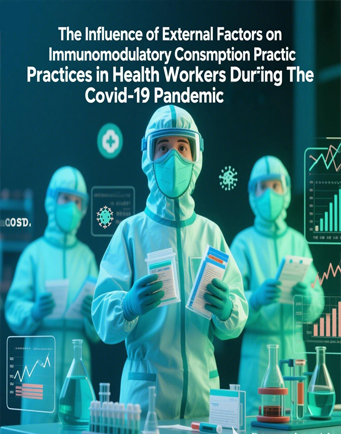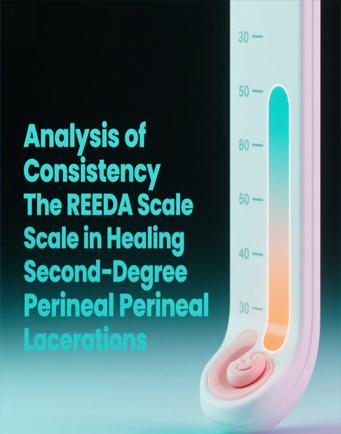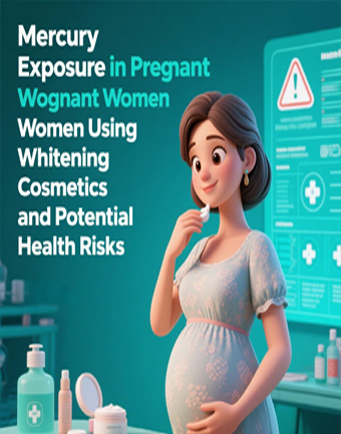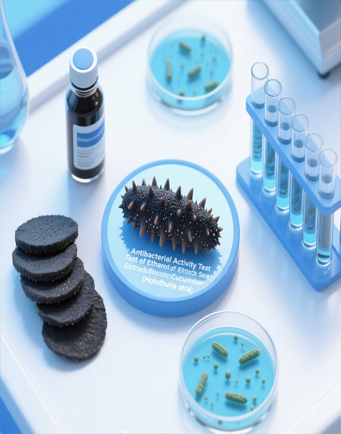The Glycemic Index of Gayam (Inocarpus fagifer Forst) Cookies as a High Dietary Fiber Food
Downloads
The type 2 diabetes (T2D) is still one of the world's public health problems. It needs serious handling and prevention efforts in the nutritional aspect. The high prevalence of T2D is related to the low intake of dietary fiber. This type of food has a low glycemic index (GI). Gayam is a high-dietary fiber material that can be used for the manufacture of flour and as processed food material for the high-dietary fiber cookies. The objectives of this research were to study the GI evaluation of cookies from gayam flour. Cookies were tested for chemical composition, and glycemic index. The glycemic index evaluation test used 12 volunteers taken from the healthy group/nondiabetic, normal nutritional status (BMI: 18.5-22.9), and age 19-55 years. The results of this study indicate the dietary fiber content of gayam cookies was 4.57 g/100 g and included in the category of high dietary fiber food. The glycemic index of gayam cookies was 43 and the low glycemic index category. The obtained results show for the first time the potential of gayam cookies in hyperglycaemia management. The conclusion of this study was that gayam cookies has high dietary fiber content and low GI level. Gayam cookies can be used as an alternative snack to control blood glucose levels in the prevention of diabetes mellitus.
Ahmad, E., Lim, S., Lamptey, R., Webb, D. R., & Davies, M. J. (2022). Type 2 diabetes. The Lancet, 400(10365), 1803–1820. https://doi.org/10.1016/S0140-6736(22)01655-5
Akhlaghi, M. (2024). The role of dietary fibers in regulating appetite, an overview of mechanisms and weight consequences. Critical Reviews in Food Science and Nutrition, 64(10), 3139–3150. https://doi.org/10.1080/10408398.2022.2130160
Alharbi, S., Garcia, A. L., Morrison, D. J., Hanske, L., & Edwards, C. A. (2015). Developing the concept of dietary estimation of fermentable carbohydrate (FC). Proceedings of the Nutrition Society, 74(OCE1), E21. https://doi.org/10.1017/S0029665115000361
Augustin, L. S. A., Aas, A.-M., Astrup, A., Atkinson, F. S., Baer-Sinnott, S., Barclay, A. W., Brand-Miller, J. C., Brighenti, F., Bullo, M., Buyken, A. E., Ceriello, A., Ellis, P. R., Ha, M.-A., Henry, J. C., Kendall, C. W. C., La Vecchia, C., Liu, S., Livesey, G., Poli, A., … Jenkins, D. J. A. (2020). Dietary Fibre Consensus from the International Carbohydrate Quality Consortium (ICQC). Nutrients, 12(9), 2553. https://doi.org/10.3390/nu12092553
Borkoles, E., Krastins, D., Van Der Pols, J. C., Sims, P., & Polman, R. (2022). Short-Term Effect of Additional Daily Dietary Fibre Intake on Appetite, Satiety, Gastrointestinal Comfort, Acceptability, and Feasibility. Nutrients, 14(19), 4214. https://doi.org/10.3390/nu14194214
Chiavaroli, L., Lee, D., Ahmed, A., Cheung, A., Khan, T. A., Blanco, S., Mejia, Mirrahimi, A., Jenkins, D. J. A., Livesey, G., Wolever, T. M. S., Rahelić, D., Kahleová, H., Salas-Salvadó, J., Kendall, C. W. C., & Sievenpiper, J. L. (2021). Effect of low glycaemic index or load dietary patterns on glycaemic control and cardiometabolic risk factors in diabetes: Systematic review and meta-analysis of randomised controlled trials. The BMJ, 374. https://doi.org/10.1136/bmj.n1651
Demangeat, A., Meynier, A., Sanoner, P., Nazare, J.-A., Hornero-Ramirez, H., & Vinoy, S. (2023). Impact of cranberry polyphenols and fibers, and slowly digestible starch on glycemic and insulinemic indexes of cereal products. Clinical Nutrition ESPEN, 58, 516. https://doi.org/10.1016/j.clnesp.2023.09.269
Ding, J. (2024). Potential Application of Dietary Fiber in Improving Diabetes and Insulin Resistance. MedScien, 1(7). https://doi.org/10.61173/75mqkb09
Ehret, J., Brandl, B., Schweikert, K., Rennekamp, R., Ströbele-Benschop, N., Skurk, T., & Hauner, H. (2023). Benefits of Fiber-Enriched Foods on Satiety and Parameters of Human Well-Being in Adults with and without Cardiometabolic Risk. Nutrients, 15(18), 3871. https://doi.org/10.3390/nu15183871
Eley, B. A. (2022). Changes in blood biomarkers and the microbiome in individuals consuming a high and low fiber diet. M.S., University of Missouri--Columbia. https://doi.org/10.32469/10355/95149
El-Habashy, M. M. (2017). Health Benefits, Extraction And Utilization Of Dietary Fibers: A Review. Menoufia Journal of Food and Dairy Sciences, 2(2), 37–60. https://doi.org/10.21608/mjfds.2017.176054
Flavel, M., Jois, M., & Kitchen, B. (2021). Potential contributions of the methodology to the variability of glycaemic index of foods. World Journal of Diabetes, 12(2), 108–123. https://doi.org/10.4239/wjd.v12.i2.108
Gao, J., Xu, C., Zhang, M., Liu, J., Wu, X., Cui, C., Wei, H., Peng, J., & Zheng, R. (2022). Functional fiber enhances the effect of every-other-day fasting on insulin sensitivity by regulating the gut microecosystem. The Journal of Nutritional Biochemistry, 110, 109122. https://doi.org/10.1016/j.jnutbio.2022.109122
Gao, L. (2022). A Study on the Relationship among Dietary Fiber Intake, Type 2 Diabetes, Microbiota and Immune System. Highlights in Science, Engineering and Technology, 19, 51–57. https://doi.org/10.54097/hset.v19i.2694
Gebreil, S. Y., Ali, M. I. K., & Mousa, E. A. M. (2020). Utilization of Amaranth Flour in Preparation of High Nutritional Value Bakery Products. Food and Nutrition Sciences, 10(05), 336–354. https://doi.org/10.4236/fns.2020.105025
Hany Anastasia, M., Rahayu Santi, S., & Manurung, M. (2016). Uji Aktivitas Antioksidan Senyawa Flavonoid Pada Kulit Batang Tumbuhan Gayam (Inocarpus fagiferus Fosb.). Jurnal Kimia. https://doi.org/10.24843/JCHEM.2016.v10.i01.p03
Hebbar, S., Umakanth, S., Thimmappa, L., & Galbao, J. (2024). Effect of high dietary fiber intake on insulin resistance, body composition and weight, among overweight or obese middle-aged women: Study protocol for a double-blinded randomized controlled trail. F1000Research, 13, 396. https://doi.org/10.12688/f1000research.147438.1
Jariyah, -, Sarofa, U., Winarti, S., & Maria, I. (2022). Revealing Glycemic Index Properties of Flakes from Composite Flour (Mangrove Fruit: Porang and Mocaf Flour). International Journal on Advanced Science, Engineering and Information Technology, 12(2), 802. https://doi.org/10.18517/ijaseit.12.2.11106
K, D., Sankar, A., Chandni, R. C., & Raghu, A. V. (2017). Dietary Fiber Importance In Food and Impact on Health. International Journal of Research -GRANTHAALAYAH, 5(4RAST), 17–21. https://doi.org/10.29121/granthaalayah.v5.i4RAST.2017.3297
Kalra, S., & Gupta, Y. (2015). Number-Based Approach to Insulin Taxonomy. Diabetes Therapy, 6(4), 469–479. https://doi.org/10.1007/s13300-015-0129-8
Khan, M. A. B., Hashim, M. J., King, J. K., Govender, R. D., Mustafa, H., & Al Kaabi, J. (2019). Epidemiology of Type 2 Diabetes – Global Burden of Disease and Forecasted Trends: Journal of Epidemiology and Global Health, 10(1), 107. https://doi.org/10.2991/jegh.k.191028.001
Lerman Ginzburg, S. (2023). Diabetes. Open Encyclopedia of Anthropology. https://doi.org/10.29164/23diabetes
Li, D., Xu, C., Zhang, M., Wang, X., Guo, K., Sun, Y., Gao, J., & Guo, Z. (2021). Measuring glucose concentration in a solution based on the indices of polarimetric purity. Biomedical Optics Express, 12(4), 2447. https://doi.org/10.1364/BOE.414850
Mao, T., Huang, F., Zhu, X., Wei, D., & Chen, L. (2021). Effects of dietary fiber on glycemic control and insulin sensitivity in patients with type 2 diabetes: A systematic review and meta-analysis. Journal of Functional Foods, 82, 104500. https://doi.org/10.1016/j.jff.2021.104500
Maulana, Y., Nurul Shabrina, A., & Karyadi, B. (2024). Exploration and characterization of Gayam (Inocarpus fagifer): Conservation foundation for sustainable tropical ecosystems. JURNAL AGRONOMI TANAMAN TROPIKA (JUATIKA), 6(1), 116–127. https://doi.org/10.36378/juatika.v6i1.3381
McCleary, B. V., & McLoughlin, C. (2022). Determination of Insoluble, Soluble, and Total Dietary Fiber in Foods Using a Rapid Integrated Procedure of Enzymatic-Gravimetric-Liquid Chromatography: First Action 2022.01. Journal of AOAC INTERNATIONAL, 106(1), 127–145. https://doi.org/10.1093/jaoacint/qsac098
Meng, H., Matthan, N. R., & Lichtenstein, A. H. (2017). Reply to TMS Wolever. The American Journal of Clinical Nutrition, 106(2), 705–706. https://doi.org/10.3945/ajcn.117.160218
Muhammad Owais Fazal, Ghulam Abbas, Yasir Yaqoob, Muhammad Usman Musharraf, & Syed Kamal Hussain. (2024). The postprandial glucose-lowering effect of dietary fiber (Psyllium Husk) in patients with type 2 diabetes mellitus. The Professional Medical Journal, 31(03), 371–378. https://doi.org/10.29309/TPMJ/2024.31.03.7783
On-Nom, N., Chamchan, R., Charoensiri, R., Kongkachuichai, R., & Chupeerach, C. (2022). The Developed Ready to Eat Meal Affected to Blood Glucose and Insulin in Healthy Subjects: Glycemic Index Study. Current Research in Nutrition and Food Science Journal, 10(1), 231–239. https://doi.org/10.12944/CRNFSJ.10.1.18
Patil, S. R., Chavan, A. B., Patel, A. M., Chavan, P. D., & Bhopale, J. V. (2023). A Review on Diabetes Mellitus its Types, Pathophysiology, Epidermiology and its Global Burden. Journal for Research in Applied Sciences and Biotechnology, 2(4), 73–79. https://doi.org/10.55544/jrasb.2.4.9
RamyaBai, M., Wedick, N. M., Shanmugam, S., Arumugam, K., Nagarajan, L., Vasudevan, K., Gunasekaran, G., Rajagopal, G., Spiegelman, D., Malik, V., Anjana, R. M., Hu, F. B., Unnikrishnan, R., Willett, W., Malleshi, N., Njelekela, M. A., Gimbi, D., Krishnaswamy, K., Henry, C., … Sudha, V. (2019). Glycemic Index and Microstructure Evaluation of Four Cereal Grain Foods. Journal of Food Science, 84(12), 3373–3382. https://doi.org/10.1111/1750-3841.14945
Simões, C. F., Locatelli, J. C., De Oliveira, G. H., & Lopes, W. A. (2021). It is time to standardize the TyG index. Endocrine, 71(2), 522–523. https://doi.org/10.1007/s12020-020-02448-5
Wang, S., Liu, D., Qu, J., Zhu, H., Chen, C., Gibbons, C., Greenway, H., Wang, P., Bollag, R. J., Liu, K., & Li, L. (2021). Streamlined Subclass-Specific Absolute Quantification of Serum IgG Glycopeptides Using Synthetic Isotope-Labeled Standards. Analytical Chemistry, 93(10), 4449–4455. https://doi.org/10.1021/acs.analchem.0c04462
Widayati, Y., & Umarudin, U. (2022). Skrining Senyawa Metabolit Sekunder pada Ekstrak Aseton Biji Gayam (Inocarpus fagifer). Spizaetus: Jurnal Biologi Dan Pendidikan Biologi, 3(3), 104. https://doi.org/10.55241/spibio.v3i3.78
Wijanarka, A., Tifauzah, N., and Wijaningsih, W. (2020). Antidiabetic Potential of Modified Gayam (Inocarfus Fagifer Forst.) Starch in Diabetic Rats STZ-NA Induced. Pakistan Journal of Medical and Health Sciences (PJMHS), 14(2), 1474-1478.
Wolever, T. M. S., Meynier, A., Jenkins, A. L., Brand-Miller, J. C., Atkinson, F. S., Gendre, D., Leuillet, S., Cazaubiel, M., Housez, B., & Vinoy, S. (2019). Glycemic Index and Insulinemic Index of Foods: An Interlaboratory Study Using the ISO 2010 Method. Nutrients, 11(9), 2218. https://doi.org/10.3390/nu11092218
Zhang, D., Sheng, J., Chen, L., Jiang, Y., Cheng, D., Su, Y., Yu, Y., Jia, H., He, P., Wang, L., Cao, Y., & Xu, X. (2023). The Role of Dietary Fiber on Preventing Gestational Diabetes Mellitus in an At-Risk Group of High Triglyceride-Glucose Index Women: A Randomized Controlled Trial. https://doi.org/10.21203/rs.3.rs-2638326/v1
Zhao, Z., Li, R., Zhao, X., Zhang, L., Wang, T., Yang, S., Han, N., & Zhu, D. (2024). Accuracy evaluation of Roche Accu‐Chek Performa blood glucose meters at low glucose concentrations: A nine‐year retrospective study. iLABMED, ila2.49. https://doi.org/10.1002/ila2.49
Copyright (c) 2024 JURNAL INFO KESEHATAN

This work is licensed under a Creative Commons Attribution-NonCommercial-ShareAlike 4.0 International License.
Copyright notice
Ownership of copyright
The copyright in this website and the material on this website (including without limitation the text, computer code, artwork, photographs, images, music, audio material, video material and audio-visual material on this website) is owned by JURNAL INFO KESEHATAN and its licensors.
Copyright license
JURNAL INFO KESEHATAN grants to you a worldwide non-exclusive royalty-free revocable license to:
- view this website and the material on this website on a computer or mobile device via a web browser;
- copy and store this website and the material on this website in your web browser cache memory; and
- print pages from this website for your use.
- All articles published by JURNAL INFO KESEHATAN are licensed under the Creative Commons Attribution 4.0 International License. This permits anyone to copy, redistribute, remix, transmit and adapt the work provided the original work and source is appropriately cited.
JURNAL INFO KESEHATAN does not grant you any other rights in relation to this website or the material on this website. In other words, all other rights are reserved.
For the avoidance of doubt, you must not adapt, edit, change, transform, publish, republish, distribute, redistribute, broadcast, rebroadcast or show or play in public this website or the material on this website (in any form or media) without appropriately and conspicuously citing the original work and source or JURNAL INFO KESEHATAN prior written permission.
Permissions
You may request permission to use the copyright materials on this website by writing to jurnalinfokesehatan@gmail.com.
Enforcement of copyright
JURNAL INFO KESEHATAN takes the protection of its copyright very seriously.
If JURNAL INFO KESEHATAN discovers that you have used its copyright materials in contravention of the license above, JURNAL INFO KESEHATAN may bring legal proceedings against you seeking monetary damages and an injunction to stop you using those materials. You could also be ordered to pay legal costs.
If you become aware of any use of JURNAL INFO KESEHATAN copyright materials that contravenes or may contravene the license above, please report this by email to jurnalinfokesehatan@gmail.com
Infringing material
If you become aware of any material on the website that you believe infringes your or any other person's copyright, please report this by email to jurnalinfokesehatan@gmail.com.





































